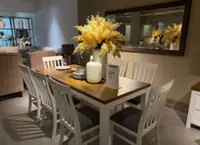The dining hall at the Eythrope Penang Hill heritage bungalow shows an orchestra of line, shape, colour, texture, pattern and lighting design elements. Photos: W Space Creatives
In our last article, we unearthed the top five principles of design – emphasis, contrast, hierarchy, unity and repetition. Using this set of rules is key to achieving an immaculate result in interior design.
This week, I would like to talk about design elements in interior design.





